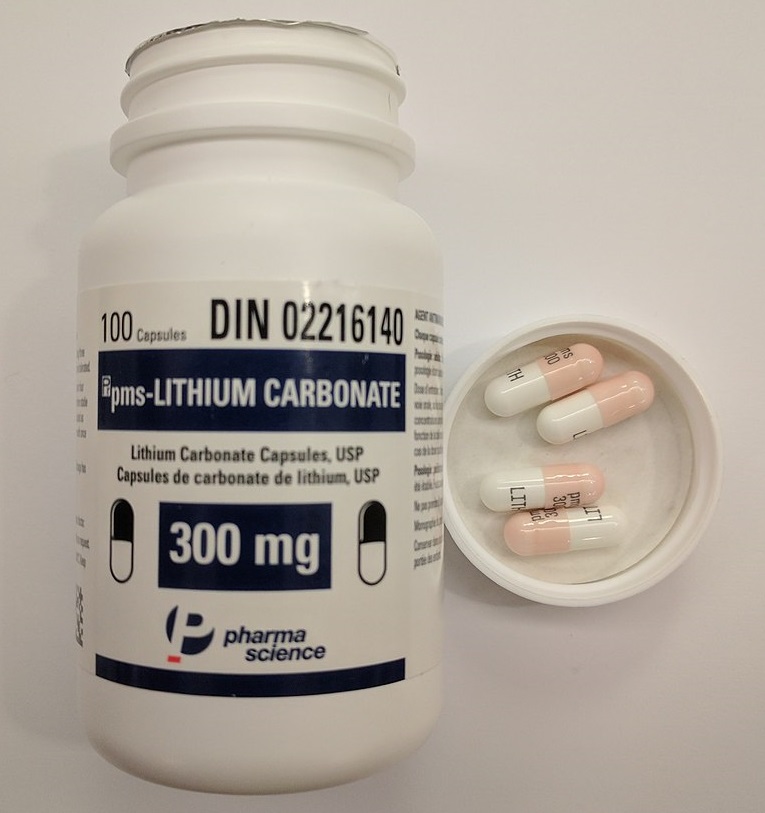What is the Difference Between Lithium and Strontium Salts
Table of Contents
The key difference between lithium and strontium salts is that lithium salts have their cation in the +1 oxidation state, whereas strontium salts have their cation in the +2 oxidation state.
Lithium is a group 1 alkali metal, while strontium is an alkali earth metal in group 2 of the periodic table. Therefore, their salt compounds are different from each other according to the oxidation state of the cation. Moreover, we can use a flame test to distinguish between them. The flame test is the analytical technique we can use to distinguish between metallic salts. Different metallic salts give different colours to the flame. However, both lithium salts and strontium salts give a red colour to the flame, but there are differences in the red colour intensity produced by each salt type.
CONTENTS
1. Overview and Key Difference
2. What is Lithium Salt
3. What is Strontium Salt
4. Lithium vs Strontium Salts in Tabular Form
5. Summary
What is Lithium Salt?
Lithium salts are the ionic compounds of lithium cation and salt anions. Lithium is an alkali metal from group 1 of the periodic table. Usually, lithium compounds or lithium salts are useful as psychiatric medication. Primarily, we can use these salts to treat bipolar disorder and major depressive disorders. This type of medication is important when antidepressants do not improve the conditions of the patient.
Lithium salts contain lithium in a + oxidation state where the chemical formula is Li+. The anion of the ionic compound/salt can vary, e.g. chloride anion, carbonate anion, sulfate anion, etc. Therefore, there are many trade names for lithium salts. However, the metabolism of lithium salts occur in the kidney, and the elimination half-life can vary from 24 hours to 36 hours.

Figure 01: Lithium Salts
There can be some common side effects of lithium salts, including increased urination, shakiness of the hands, and increased thirst. In addition, there can be some adverse side effects as well, including hypothyroidism, diabetes insipidus, and lithium toxicity. More importantly, we need to monitor the levels of lithium salts in our blood in order to prevent any toxicity. High levels of lithium salts in our blood can cause high diarrhoea, vomiting, poor coordination, sleepiness, etc.
What is Strontium Salt?
Strontium salts are the ionic compounds of strontium cation and salt anions. Strontium is a group 2 metal that comes under the alkaline earth metal category. Therefore, this metal atom can form stable +2 oxidation state cations by removing 2 electrons from its outermost electron shells. Therefore, the strontium salts are of AB2 structure where A is strontium and B is a -1 anion. In addition, if the anion has a -2 charge, then the strontium salt has an AC structure; A is a strontium cation and C is a -2 anion.

Figure 02: Strontium Salts are Added to Fireworks
When considering its applications, strontium aluminate is useful in glow in the dark toys, strontium carbonate and most other strontium salts are useful in firework production to get a deep red colour flame, strontium chloride is useful in toothpaste production, etc.
What is the Difference Between Lithium and Strontium Salts
Lithium and strontium are metals that can be found in group 1 and group 2 of the periodic table, respectively. The key difference between lithium and strontium salts is that lithium salts have their cation in the +1 oxidation state, whereas strontium salts have their cation in the +2 oxidation state. In the flame test, lithium gives a less intense red colour than strontium.
The below infographic lists the differences between lithium and strontium salts in tabular form for side by side comparison.
Summary – Lithium vs Strontium Salts
Lithium and strontium are metals that can be found in group 1 and group 2 of the periodic table, respectively. The key difference between lithium and strontium salts is that lithium salts have their cation in the +1 oxidation state, whereas strontium salts have their cation in the +2 oxidation state.
Reference:
1. “Lithium (Medication).” Wikipedia, Wikimedia Foundation.
Image Courtesy:
1. “Lithium300mg” By James Heilman, MD – Own work (CC BY-SA 4.0) via Commons Wikimedia
2. “Ignis Brunensis 2010-05-22 (5)” By Vojta Jahoda (CC BY 3.0) via Commons Wikimedia
ncG1vNJzZmivp6x7pbXFn5yrnZ6YsqOx07CcnqZemLyue9ahmK1lmah6tbTEZpuinpaav6a6wp5km52krLKmuoyloK2gmaq6bq3NnWSsrKKku7W11KZkrJmcqcBw